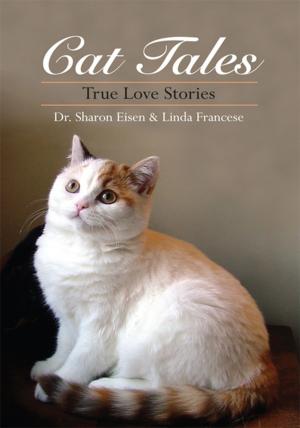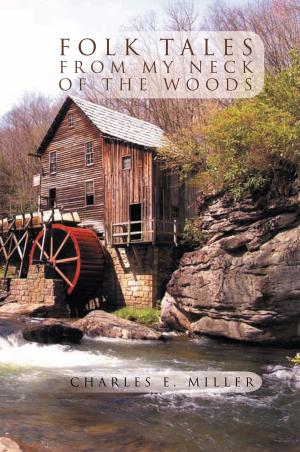Peacing the World Together
How to Be a More Peaceful Person ...And Help Save the World
Nonfiction, Health & Well Being, Self Help, Self Improvement, Affirmations| Author: | FRANK JAMES UNGER | ISBN: | 9781469107004 |
| Publisher: | Xlibris US | Publication: | November 14, 2007 |
| Imprint: | Xlibris US | Language: | English |
| Author: | FRANK JAMES UNGER |
| ISBN: | 9781469107004 |
| Publisher: | Xlibris US |
| Publication: | November 14, 2007 |
| Imprint: | Xlibris US |
| Language: | English |
A small refrigerator magnet has adorned our kitchen for more years than I can remember. It bears the image of a dove with the words, Let there be peace, at least between you and me. The three square inches it has displaced is opposite in proportion to its magnitude in the lives of family and friends. It is a mantra, a goal, a challenge. Because for so many, peace does not come easily or naturally!
Archeological evidence substantiates human irascibility. Indeed, Homo sapiens were endowed with tendencies toward turbulence. Bones shattered by instruments of humanoids are not uncommon to ancient skeletons. Written documents confirm the same: Cain and Able, David and Goliath, dozens of bloody wars and holocausts are recorded in biblical and pre-biblical documents that manifest mankinds snarling, crotchety predisposition to conflict and violence.
Discouraged by that disturbing legacy, we recognize exceptions. Though peace is an intentional accord, it is made easier for some who luckily avoid the ancestral consequence of contentiousness. Through genetic good fortune, they are endowed with intrinsic tranquility and a special quiet devoid of malevolence. Gladly, they accept the gift of unsolicited good genes.
Acknowledging a quarrelsome nature, then, we embark on this journey of peace, the road made smoother through relevant prayer, prose and poetry. Each step is an encounter with a peace borne naturally or achieved the hard way. In either case, the following pages are channels of peace . . . at least between you and me.
And so we reach out together, striving to influence families and cities, states and nations . . . peacefully. After all, the leaders of mighty and minute countries alike agree that the key to peace between all lands is that it begins within individual hearts, homes and families. For only then can it infect every place on a precious earth we will someday call . . . peaceful.
Of all the arboreal wonders on earth, none is more amazingly self-propagating than Ficus Benghalensis, the banyan tree. A massive, improbable sight to behold, the banyan puts down feelers from its branches; the feelers grow into the ground and become roots; and the new roots pump sap up and act as support struts for the tree. In this way, the tree grows outward.
Equally as amazing, banyans count their days in hundreds of years as they create the widest natural canopies in the world. A single tree can provide shade for an entire village. It is said that Alexander the Great camped with an army of 7,000 soldiers under the shade of one banyan.
In more recent years, an imposing banyan tree has spread its arms and roots over one full acre of land in the city of Fort Myers, Florida. Its notoriety and location are the result of a friendship between two of Americas early business pioneers, men who were close, personal friends.
The time was 1925. One of the men visited the county of Andhra Pradesh in India and came upon the largest banyan tree in the world, having since reached 570 years in age and covering the breath of 14 acres with 1,650 roots. At the time of his visit, the entrepreneur had a vested interest in the tree, suspecting it might prove valuable as a source of natural rubber. He brought a seedling back to his friend who had a Winter residence in Fort Myers. The friend was delighted with the gift and planted it on his estate. It grew well and still delights guests.
Harvey Firestone was the purveyor of the seedling. His friend, Thomas Edison was the recipient. To this day, seedlings of Edisons great tree are sold at his estate, one of them growing in fine health on this writers property. Similarly, admirers from around the world have procured seedlings and carried them back to faraway lands. Hence, the legacy of the giant tree of India is proliferated by the tree of Thomas Edison, now renowned as the third lar
A small refrigerator magnet has adorned our kitchen for more years than I can remember. It bears the image of a dove with the words, Let there be peace, at least between you and me. The three square inches it has displaced is opposite in proportion to its magnitude in the lives of family and friends. It is a mantra, a goal, a challenge. Because for so many, peace does not come easily or naturally!
Archeological evidence substantiates human irascibility. Indeed, Homo sapiens were endowed with tendencies toward turbulence. Bones shattered by instruments of humanoids are not uncommon to ancient skeletons. Written documents confirm the same: Cain and Able, David and Goliath, dozens of bloody wars and holocausts are recorded in biblical and pre-biblical documents that manifest mankinds snarling, crotchety predisposition to conflict and violence.
Discouraged by that disturbing legacy, we recognize exceptions. Though peace is an intentional accord, it is made easier for some who luckily avoid the ancestral consequence of contentiousness. Through genetic good fortune, they are endowed with intrinsic tranquility and a special quiet devoid of malevolence. Gladly, they accept the gift of unsolicited good genes.
Acknowledging a quarrelsome nature, then, we embark on this journey of peace, the road made smoother through relevant prayer, prose and poetry. Each step is an encounter with a peace borne naturally or achieved the hard way. In either case, the following pages are channels of peace . . . at least between you and me.
And so we reach out together, striving to influence families and cities, states and nations . . . peacefully. After all, the leaders of mighty and minute countries alike agree that the key to peace between all lands is that it begins within individual hearts, homes and families. For only then can it infect every place on a precious earth we will someday call . . . peaceful.
Of all the arboreal wonders on earth, none is more amazingly self-propagating than Ficus Benghalensis, the banyan tree. A massive, improbable sight to behold, the banyan puts down feelers from its branches; the feelers grow into the ground and become roots; and the new roots pump sap up and act as support struts for the tree. In this way, the tree grows outward.
Equally as amazing, banyans count their days in hundreds of years as they create the widest natural canopies in the world. A single tree can provide shade for an entire village. It is said that Alexander the Great camped with an army of 7,000 soldiers under the shade of one banyan.
In more recent years, an imposing banyan tree has spread its arms and roots over one full acre of land in the city of Fort Myers, Florida. Its notoriety and location are the result of a friendship between two of Americas early business pioneers, men who were close, personal friends.
The time was 1925. One of the men visited the county of Andhra Pradesh in India and came upon the largest banyan tree in the world, having since reached 570 years in age and covering the breath of 14 acres with 1,650 roots. At the time of his visit, the entrepreneur had a vested interest in the tree, suspecting it might prove valuable as a source of natural rubber. He brought a seedling back to his friend who had a Winter residence in Fort Myers. The friend was delighted with the gift and planted it on his estate. It grew well and still delights guests.
Harvey Firestone was the purveyor of the seedling. His friend, Thomas Edison was the recipient. To this day, seedlings of Edisons great tree are sold at his estate, one of them growing in fine health on this writers property. Similarly, admirers from around the world have procured seedlings and carried them back to faraway lands. Hence, the legacy of the giant tree of India is proliferated by the tree of Thomas Edison, now renowned as the third lar















